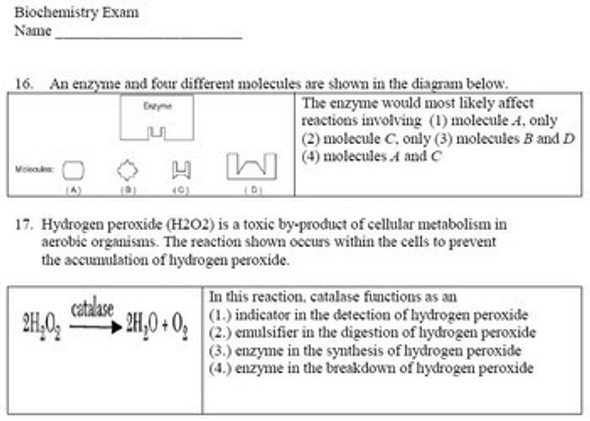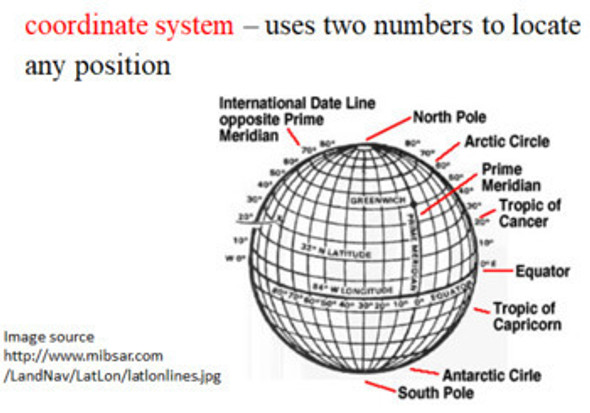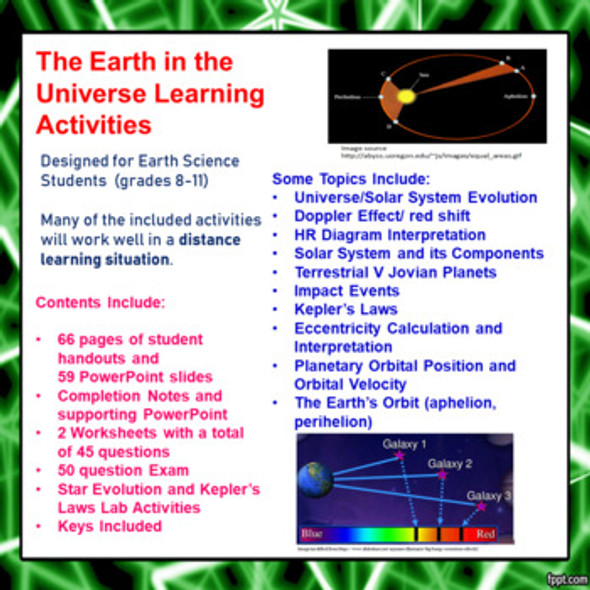Description
This zip file contains many different activities (57 pages of student handouts and 2 PowerPoints with a total of 126 slides) which can be used to compose a unit introducing the earth's changing environment. Concepts addressed include observations, inferences, percent deviation (error), finding volume, density, rates of change, cyclic changes, dynamic equilibrium and many others. The learning objectives and specific contents of this set of materials is listed below. This set of activities is suited for many earth science, environmental science or physical science classes. With teacher guidance, many components in these materials are adaptable to an enriched middle level science curriculum.
All documents are in PowerPoint, word or pdf format to allow you to edit the documents to meet your needs. These documents are well suited for use in distance learning environments. Answer keys for all student activities are provided.
The specific contents of materials in the package are as follows:
- Introduction to the Earth's Changing Environment Completion Notes (15 pp.)
- PowerPoint to accompany the Completion Notes (54 slides) (includes 2 ticket out/closure activities)
- Introduction to the Earth's Changing Environment Worksheet 1 (Inferences, Classification and Percent Deviation) (3 pp.) (27 questions)
- Introduction to the Earth's Changing Environment Worksheet 2 (Density) (7 pp.) (25 questions)
- Introduction to the Earth's Changing Environment Worksheet 3 (Cyclic Events, Rate of Change and Pollution) (5 pp.) (18 questions)
- Density Worksheet 1 (1 p.) (5 questions)
- Density Worksheet 2 (4 pp.) (8 questions)
- Density Lab (3 pp.)
- Sugar Solution Density Column (1 p.)
- Sunspot Analysis Lab (3 pp.)
- Introduction to the Earth's Changing Environment Quiz (13 pp.) (40 questions)
- Jeopardy PowerPoint Review Game (31 questions) (74 slides)
- Learning Objectives including NGSS, Common Core and NY State Core Curriculum (2 pp.)
Learning Objectives
Upon the completion of this unit the student will be able to:
1. list and briefly describe four key topics taught in earth science.
2. explain the role observations play in the formation of inferences.
3. explain why instruments are needed to make some observations.
4. explain why classification is necessary in science.
5. list and describe three dimensional quantities and their measurement units.
6. distinguish between scalar and vector quantities.
7. explain why no measurement is perfect.
8. compute the percent deviation of a measurement, given its accepted value.
9. define the term mass and explain how it is measured.
10. define the term volume.
11. explain how the volume of an irregular object can be measured by displacement in a graduated cylinder.
12. calculate the density of a substance.
13. use the density formula to determine the mass or volume of a substance, when given the other two variables in the density equation.
14. recognize the density of a substance remains the same, unless the pressure upon the substance or its temperature is changed.
15. discuss how temperature or pressure changes influence the density of most substances.
16. recognize that water is most dense as a liquid at 4℃.
17. explain the difference between inversely proportional and directly proportional relationships.
18. state Archimedes' Principle.
19. compare the relative densities of different substances using a liquid.
20. recognize and explain why most substances have their greatest density in the solid state and their lowest density in the gas state.
21. calculate the rate of change in a field.
22. explain what is meant by a cyclic change.
23. list some examples of cyclic changes.
24. define the term prediction.
25. explain what is meant by a natural hazard and list some examples of these.
26. explain why accurate predictions of natural hazards are important.
27. define the term interface.
28. recognize energy exchange often occurs across interfaces.
29. define the term dynamic equilibrium and list some examples of this.
30. explain what is meant by natural resources and list some examples of these.
31. recognize that shortages of natural resources may lead to conflict.
32. list two peaceful ways of coping with shortages of natural resources.
33. recognize the relationship of environmental pollution to human population density.
34. list some causes of pollution.
NGSS Standards Addressed (portions of); HS-ESS.3A, HS-ESS.3B
Common Core State Connections:
ELA/Literacy: RST 11-12.7
Mathematics: MP. 2, MP. 4, HSN-Q.A.1
Terms of Use
Purchase of the product is for classroom use by the purchaser only. It is a violation for individuals, schools, and districts to redistribute or sell this item on the Internet or to other individuals. I do encourage you to use and edit these documents to suit your needs with your own students in distance learning environments.
This work is licensed under a Creative Commons Attribution-NonCommercial-ShareAlike 4.0 International License.











